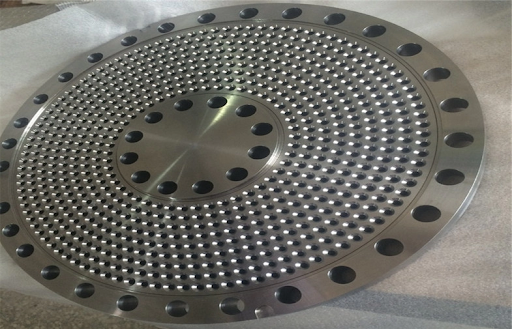In the world of advanced materials and industrial manufacturing, hollow fibers play a crucial role. From life-saving dialysis membranes to high-performance filtration systems, these fibers are everywhere. The hollow fiber spinning machine is the heart of their production. Understanding how this machine works and why it’s essential opens the door to innovations across multiple industries.
What is a Hollow Fiber Spinning Machine?
A hollow fiber spinning machine is a specialized piece of equipment used to manufacture hollow fibers—tiny, tube-like structures with a hollow center. These fibers are typically made from polymers and are valued for their high surface area, lightweight structure, and ability to facilitate selective permeability.
The machine precisely extrudes polymer solutions through a spinneret designed to form a hollow structure, solidifying the fiber in a controlled environment. The result is a consistent, high-quality fiber ready for a variety of applications, from healthcare to water purification.
How Hollow Fibers Are Made
The process of making hollow fibers is called spinning. It involves pushing a liquid polymer (called the dope) through a specialized nozzle (the spinneret) while simultaneously injecting a bore fluid that creates the hollow center. As the polymer exits the spinneret, it enters a coagulation bath or air gap where it solidifies into a fiber.
The fiber then undergoes stretching, washing, and drying processes before being wound onto a spool for further use. The precision at every step is critical to ensure uniformity, strength, and performance.
Components of a Hollow Fiber Spinning Machine
Several critical components come together to make hollow fiber spinning possible:
Polymer Feed System
This system handles the delivery of the polymer solution to the spinneret. It must maintain a steady flow rate and pressure to ensure consistent fiber dimensions and quality.
Spinneret Technology
The spinneret is a precision-engineered nozzle with multiple channels—one for the polymer solution and one for the bore fluid. The design of the spinneret directly impacts the diameter, wall thickness, and uniformity of the hollow fibers.
Coagulation Bath
After extrusion, fibers often enter a coagulation bath filled with a non-solvent that helps solidify the polymer structure. The bath temperature, composition, and flow dynamics are finely controlled to achieve optimal fiber formation.
Winding and Collection Units
Once the fibers are formed and washed, they are gently dried and wound onto reels. Proper tension and speed control during this step prevent fiber breakage or deformation.
Types of Hollow Fiber Spinning Machines
Depending on the material and application, different spinning techniques are used:
Dry Spinning Machines
In dry spinning, the polymer solution is extruded into warm air where the solvent evaporates, leaving behind solid fiber. It’s suitable for polymers that are sensitive to coagulation baths.
Wet Spinning Machines
Here, the polymer is extruded directly into a coagulation bath. Wet spinning is ideal for fibers that require fast solidification and precise control over pore structure.
Dry-Wet Spinning Machines
This hybrid method involves extruding the polymer through an air gap before entering the coagulation bath. It offers greater control over fiber morphology and is widely used in membrane production.
Applications of Hollow Fiber Spinning Machines
Hollow fiber spinning machines enable the creation of fibers used in a diverse range of industries:
Medical Applications
Hollow fibers are essential for hemodialysis membranes, oxygenators, and drug delivery systems. They allow for selective filtration and transfer of molecules, making them indispensable in medical care.
Water Treatment and Filtration
Hollow fiber membranes are widely used for microfiltration, ultrafiltration, and even reverse osmosis. Their high surface area and filtration efficiency make them perfect for treating drinking water and industrial wastewater.
Industrial Gas Separation
In industries where gas purity is crucial, hollow fiber membranes help separate gases like nitrogen and oxygen with remarkable efficiency. They are also used in carbon dioxide removal and hydrogen recovery systems.
Advantages of Using Hollow Fiber Spinning Machines
Using a hollow fiber spinning machine offers several benefits:
- High Precision: They allow for consistent fiber dimensions, which are critical for performance-sensitive applications.
- Mass Production: Machines can produce kilometers of hollow fibers daily, meeting large-scale industrial demands.
- Versatility: They can handle various polymer types and bore fluids, catering to different applications.
- Cost-Effective: Automated spinning processes reduce labor costs and minimize waste material.
By investing in a high-quality hollow fiber spinning machine, companies can ensure better product quality and competitive production rates.
Challenges in Hollow Fiber Production
Despite their benefits, producing hollow fibers is not without challenges:
- Maintaining Uniformity: Minor fluctuations in pressure, temperature, or composition can lead to defects.
- Complex Setup: The spinning line requires precise calibration and maintenance.
- Material Sensitivity: Some polymers are sensitive to environmental factors like humidity and temperature during spinning.
Overcoming these challenges requires skilled technicians, robust machine designs, and strict quality control systems.
Future Innovations in Hollow Fiber Spinning Technology
The future of hollow fiber spinning looks exciting:
- Smart Machines: Integration of AI and IoT technology will allow real-time monitoring and adaptive control of spinning parameters.
- Eco-Friendly Processes: New spinning techniques aim to reduce solvent use and energy consumption.
- Advanced Materials: Research is leading to the development of new polymers with enhanced permeability, strength, and chemical resistance.
These advancements promise to make hollow fiber production more efficient, sustainable, and versatile than ever before.
Conclusion
The hollow fiber spinning machine is an engineering marvel that has made countless technological advancements possible. From clean water and breathable air to advanced medical treatments, the fibers it produces touch nearly every aspect of modern life. As technology continues to evolve, so too will the capabilities of these spinning machines, unlocking new opportunities and applications across industries. Whether for medical, industrial, or environmental use, mastering hollow fiber production is key to future innovation.

